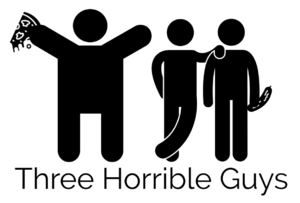Difference between revisions of "Three horrible guys Project Report"
| Line 92: | Line 92: | ||
==<div style="background: #8b1209; padding: 15px; line-height: 0.3em; text-indent: 15px; font-size:18px; font-family:Helvetica"><font color= #FFFFFF>Population Density Analysis</font></div>== | ==<div style="background: #8b1209; padding: 15px; line-height: 0.3em; text-indent: 15px; font-size:18px; font-family:Helvetica"><font color= #FFFFFF>Population Density Analysis</font></div>== | ||
<div style="font-family:Helvetica;font-size:16px"> | <div style="font-family:Helvetica;font-size:16px"> | ||
| + | |||
| + | Population Density Analysis | ||
| + | From the normalized population density data that we have extracted and populated into the geopackage layer, we can then plot these data on the map for each store. It has been split into 5 classes of Quantile (Equal Count). Below is an illustration of the classes and histogram: | ||
| + | |||
| + | |||
| + | Symbology settings for population density | ||
| + | |||
| + | Bin settings for population density | ||
| + | |||
| + | |||
| + | Thematic map showing normalized population density | ||
| + | |||
| + | From the above charts where we analyse the normalized population density, we can see that most stores have a high population density. However, when compared to the thematic map of sales, it seems that population density has little to no relation; having a higher population density does not necessarily mean higher sales. | ||
==<div style="background: #8b1209; padding: 15px; line-height: 0.3em; text-indent: 15px; font-size:18px; font-family:Helvetica"><font color= #FFFFFF>Buffer Analysis</font></div>== | ==<div style="background: #8b1209; padding: 15px; line-height: 0.3em; text-indent: 15px; font-size:18px; font-family:Helvetica"><font color= #FFFFFF>Buffer Analysis</font></div>== | ||
Revision as of 01:24, 22 November 2019
Contents
Missing Area Analysis
As we observe the generated trade areas, it seems there are some areas which are not covered by any of the stores. Hence, we decided to analyse these areas.
Missing area 1
In the above figure, the uncovered area is 大安森林公园 which is a park. As it is not common to order a pizza to a park, being uncovered is to be expected.
Missing area 2
In the above figure, we do see buildings that are not in any trade area. Therefore, this uncovered area may have been omitted and should be fulfilled by one of the branches.
Store Sales Analysis
Store Sales Analysis The yearly store sales of IFC range from USD$6,809,445 - $13,863,637, with the branch YT being the lowest, and the branch MA having the highest sales. The median sales is branch SS, with USD$9597893.5
Overall Store sales
From the sales data that we have extracted and populated into the geopackage layer, we can then plot these data on the map for each store. It has been split into 5 classes of Quantile (Equal Count). Below is an illustration of the classes and histogram:
Symbology settings for overall sales
Bins settings for overall sales
Thematic map of overall Sales
Based on the following thematic map, we can see that the top performers are branches YW,MA,CA and the branches WT,CR,YT are the worst performers. Our recommendation in this case would be to look at the factors surrounding the top performers and apply said factors to the worst performers in order to boost their sales.
We were then interested in seeing if there were any spatial patterns based on sales, so we separated the areas into stores below/above median sales.
Splitting of values using median
Colour coding median split
Thematic map showing areas above/below median sales The map above reveals an interesting pattern, where the northern stores perform better than southern stores. Our suggestion would be to look at location based factors, such as type of buildings (residential/office) and see whether they vary between areas. It is also possible to look at connectivity with regards to road types, and see if accessibility is a problem for some stores.
Total Delivery Analysis
From the normalized population density data that we have extracted and populated into the GeoPackage layer, we can then plot these data on the map for each store. It has been split into 5 classes of Equal Interval. Below is an illustration of the classes and histogram:
Symbology settings for total delivery
Bin settings for total delivery
Thematic map for delivery sales
Unsurprisingly, having a high delivery count leads to higher sales when compared to the sales thematic map . This is possible as unlike a store where products are priced with vastly different ranges E.g. $5, $5000, the price range of IFC products are roughly the same. Although there might be orders which are of higher value, it seems these orders do not affect the sales amount by much. The exception to this is the area ST, where although it has a comparable delivery count to areas that perform better than the median, it is still slightly behind in sales.
Population Density Analysis
Population Density Analysis From the normalized population density data that we have extracted and populated into the geopackage layer, we can then plot these data on the map for each store. It has been split into 5 classes of Quantile (Equal Count). Below is an illustration of the classes and histogram:
Symbology settings for population density
Bin settings for population density
Thematic map showing normalized population density
From the above charts where we analyse the normalized population density, we can see that most stores have a high population density. However, when compared to the thematic map of sales, it seems that population density has little to no relation; having a higher population density does not necessarily mean higher sales.
